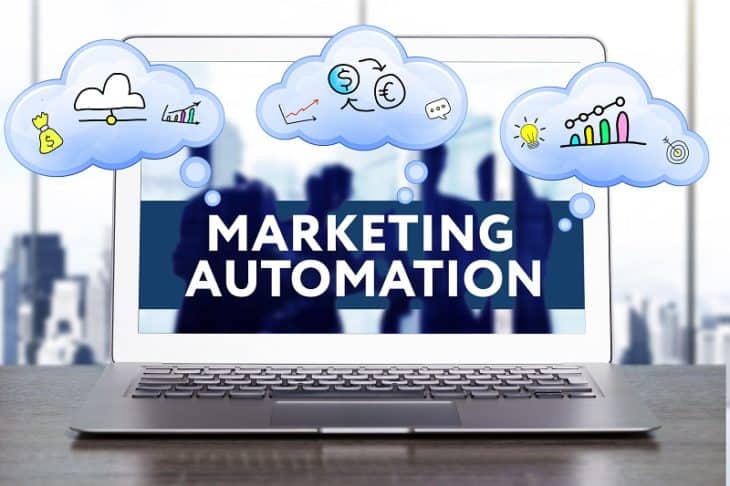The workforce has been forever changed by COVID-19 – where we work, how we work, and perhaps even who we work with as marketing departments reorganize or shift priorities. Organizations may be faced with the reality that the same amount of work still needs to get done with fewer resources now. It’s been a real challenge for many to keep up with the pace and also navigate new operational processes at the same time.
For many remote or hybrid marketing departments, leaning on technology has been especially instrumental to keeping everything running smoothly and getting the job done. Marketing automation is just one of many technologies that can eliminate inefficiencies in the day-to-day functions for your marketing and sales teams.
Who is marketing automation a good fit for? Well, it may be fair to say that every marketing department can find use for a marketing automation platform in some way. Whether it’s CRM management, integrating your website, or creating email workflows, automation is one of the major pieces of the puzzle that can elevate productivity and streamline all communications.
If you’re looking to do more with less, here are 5 reasons to invest in marketing automation:
1. Save On Time (And Use Time More Efficiently)
Investing in marketing automation can improve productivity no matter your organization’s size. Automating some of your day-to-day coordination can certainly free up time for tasks such as:
Email marketing
CRM and list management
Reminders
Organic social media posts
Form submissions and follow-up messages
Customer service requests
Once you have a process nailed down in a platform, there are plenty of options to create templates to turn around emails, content, and other communication components quickly. Having these daily tasks managed automatically allows for your attention to be kept at a bird’s-eye view of the overall strategy and success.
2. Understand Your Target Audience Better
We often recommend our clients gain an understanding of a target audience by doing one thing in particular when it comes to digital: test. Your customers will tell you what’s working (and not working) for them—and this can all be uncovered and managed through a marketing automation platform.
Certain features like content, imagery, subject lines, and timing can all be tested to help you stop the guessing. Keep in mind to test one thing at a time though, as you may not know what specifically made an impact!
And if you’re not using analytics from these tests to drive your next move in your digital marketing, then now’s the perfect time to start.
3. Stronger Marketing and Sales Alignment
Most marketing automation platforms (Pardot, Marketo, HubSpot, etc.) have CRM integration, which can help maintain cross-collaboration between marketing and sales teams. You can also leverage advanced features to qualify leads, prioritize sales efforts, and manage your sales funnel.
There is considerable insight to be gained from marketing automation that marketers can arm sales teams with. Tapping into what blog content generates the most traffic, what email marketing content triggers the most clicks, or what landing page garnered the most leads are all helpful to understanding your audience on a deeper level.
Having access to this kind of tool and data has so much potential. It can allow for better communication and trust between marketing and sales. Working through the data together to solve problems and work towards a common goal can take your team to the next level.
4. Get Personalized Through Audience Segmentation
Having your CRM integrated with a marketing automation platform opens a unique opportunity to leverage first-party data about your prospects and customers to get hyper-specific with your targeting and content. You can get creative with personalized communications in a few different ways, in email marketing for example:
Showing different imagery based on a specific target audience segment
Adjusting subject lines based on where a person currently is in your customer journey
Including (or excluding) content based on what website pages someone visited historically
This type of tactic allows for increased relevancy in a timely, strategic manner – in the hopes of increasing chances to reach your marketing and sales goals.
Before you implement a tactic using consumer data, though, consider learning about increased privacy regulations in recent years on our blog, The Impact of Privacy on Digital Marketing.
5. Clearer Proof of Marketing Success
Marketing automation helps to consolidate where your marketing efforts live, allowing for a more streamlined measurement of success. If you’re running an automated campaign, these platforms all have an analytics and reporting section to tie each piece of your automated communications together.
It’s still up to us as digital marketers to analyze and determine any optimizations that might be needed, but it does save time making insights when the information is consolidated. This reporting can be nice campaign-specific data to review alongside your everyday Google Analytics account as well as when thinking about big-picture marketing strategy.
Want to incorporate marketing automation for your new business website? Get in touch and we can discuss.

